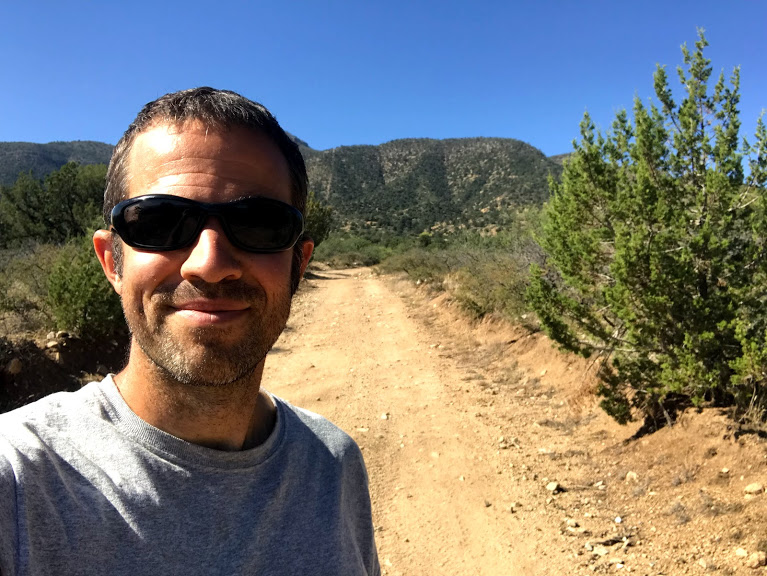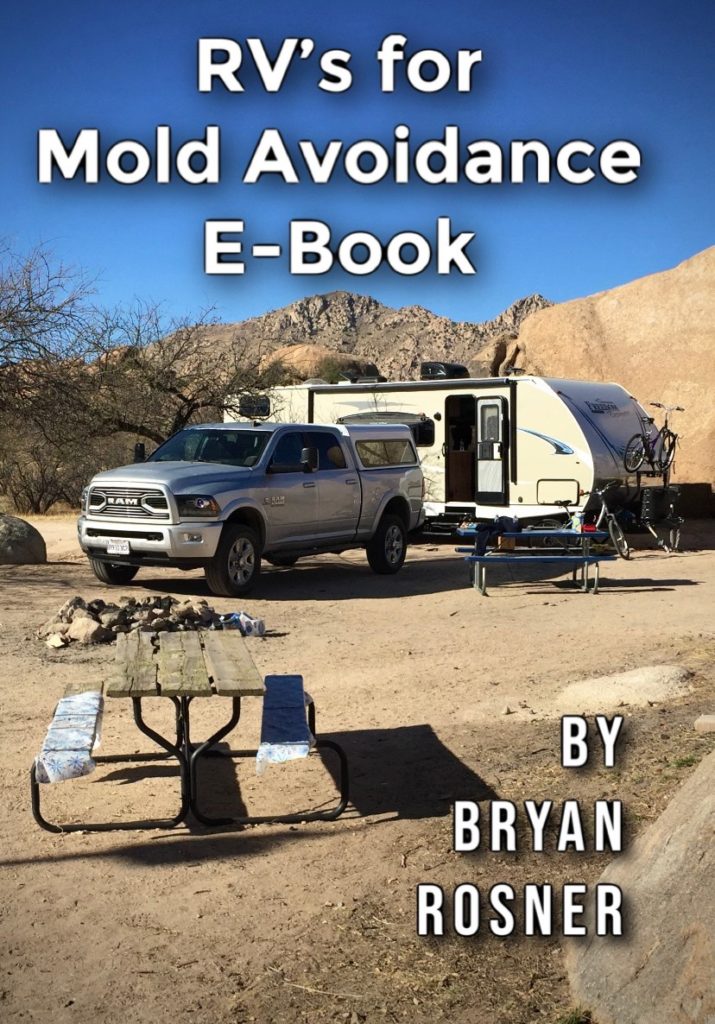
Erik-style mold avoidance is a very ESTABLISHED approach, which has been used and refined for more than three decades. As such, it isn’t really a “make up your own rules” strategy. I wrote this article because I personally wish I had known about these “common misconceptions” prior to starting mold avoidance.
Click here for my main “getting started with mold avoidance” article – where you can begin doing your “homework” on what mold avoidance is, why people do it, and how to get started.
Click here if you are interested in my RV coaching program.
Without further delay, here are the common false assumptions about mold avoidance…
False assumption: Professional laboratory testing is the best way to determine if your house or your body has a mold problem.
Reality: These are unreliable methods. We use a “mold avoidance sabbatical” instead, to make this determination. The molds that are causing illness may not even be tested for with conventional laboratory equipment, and very sick individuals may need to avoid these molds at a much higher level of caution than conventional medicine believes. The goal of a mold avoidance sabbatical is to become “unmasked” so that your own senses become the barometer for which molds to avoid, and how much you need to avoid them. (This was the first article I accidentally stumbled upon in 2017, which explained the sabbatical process. I am now friends with the article’s author, Kim).
False assumption: New construction homes are usually safe.
Reality: The most damaging molds are a combination of mold + chemicals (the mold and the chemicals taken separately are not the problem, it is when they are combined that they become super-dangerous). This combination is much more deadly in newer homes, with modern / novel chemicals. Many brand new homes come preloaded with some of the most problematic molds and problematic chemicals.
False assumption: “All mold is bad”
Reality: It turns out that most mold isn’t very bad, and only a few kinds of molds are “super toxins” and the toxins we really must work to avoid.
False assumption: The worst mold is indoors
While it may be true that initial illness is at least partially caused by living in a moldy home, once the damage has been done to the body, we notice that the molds driving ongoing illness are mostly outdoor mold toxins. You read that correctly. Areas with these “outdoor super toxins” also tend to have really bad homes as well, due to the impact these outdoor super toxins have on the biome in general. This article on outdoor mold super toxins is a MUST READ.
False assumption: Moving to the Southwest is an easy way to escape mold.
Reality: Humidity has nothing to do with succeeding in Erik-style mold avoidance. The presence of the molds we call “super toxins” can be equally likely in both humid or dry climates. For example, Tucson is one of the very worst cities in the country for “MT,” which is one of these super toxins.
False assumption: If you think your city or area is bad, it is a good idea to just move somewhere you think is better
Reality: Most experienced mold avoiders find that just picking a spot on the map and moving there is an absolute recipe for financial and health catastrophes. During early mold avoidance, it is very difficult to commit to single locations, buildings, housing choices, and other accommodations. It takes time to build mold avoidance skills and make wise decisions. And also, the early phases of mold avoidance involve intense and spontaneous detoxification which may cause the body itself to self-contaminate RV’s, homes, and other belongings. While it is of course a reasonable goal to settle down in one location eventually, it is much better to be patient and not do so immediately.
Another common experience is that people notice that neighborhoods or cities they chose to move to early on, end up having high levels of outdoor super toxins which they didn’t detect when they were inexperienced in early mold avoidance. Maintaining maximum flexibility during early mold avoidance is key to success. As is avoiding large financial decisions early on.
This rule also applies to the purchase of an RV. Personally, we self-contaminated TWO whole RV’s before we were able to keep a 3rd for a longer period of time. It is ideal to spend the first few weeks or months of mold avoidance in cheap, low-commitment housing, like hotels, before taking the financial plunge on an RV. Unless of course, you’ve done the math on potential RV trade-ins for mold avoidance.
False assumption: Mold avoidance is a temporary lifestyle
Reality: While many people do eventually succeed in regaining their health and lowering their reactivity, it often takes years, and they often feel much better if they continue avoiding the super toxins for at least a decade or possibly a lifetime.
False assumption: EMF, chemicals, reactive foods, and mold are all “bad for you”
Reality: This is really important! Erik observed that mold is the “master toxin,” meaning that if he avoided problematic mold, his issues with these other offenders completely disappeared. This doesn’t mean, of course, that chemicals are “good for us.” What it means is that once Erik was adequately clear of mold, he became just like any other normal person…he didn’t have violent reactions to chemicals anymore. The same can be said for EMF sensitivity – it is a secondary reaction, and dissipates with mold avoidance.
False assumption: “We are all different, and your treatment path may be different from mine”
Reality: While it is true that during mold avoidance some people will notice small individual variations, most experienced mold avoiders all come to realize that this illness is quite well established and standardized. The idea that we are “all different” stems from people grasping at straws and desperately reaching for random hypotheses that explain their illnesses, in a setting where recovery is rare and facts are elusive. That all changes once mold avoidance is initiated. Erik solved the mystery once and for all, and his approach works pretty much the same for everyone.
I can’t emphasize just how true this is. Erik saw mold as an underlying cause for MANY diverse conditions, and I’ve seen the same. I’ve had a best friend for 20 years who was also chronically ill. Our diseases were SO different yet we both discovered we were mold avoiders only recently.
False assumption: Taking antifungals is good
Reality: Whether or not someone has internal mold or fungal colonizations, most mold avoiders notice that taking antifungals actually can cause internal mold / fungus infections to mutate and become much worse.
False assumption: Your body will respond the same to treatments during mold avoidance as it does before mold avoidance
Reality: Mold avoidance changes the body at a much deeper level than most people realize. Treatments and crutches people used to stay stable before mold avoidance often become completely counterproductive during mold avoidance. Many people, including myself, notice unbelievable and dramatic reductions in the number of treatments we need to use. Many treatments become harmful and only hinder the recovery process.
For example, even though I personally have written 5 books on Lyme disease, and even though I tried to force treatments upon my body in early mold avoidance, eventually I realized that mold avoidance fixed the underlying infections, toxicity and other issues, and that the majority of treatments just hindered my progress.
False Assumption: Beautiful places are pristine healing locations
Reality: The problematic outdoor super toxins can be found in any location, including beautiful locations. Furthermore, some crowded city areas LACK these toxins. There are no predictive factors for where these toxins will be found. One must become “unmasked” so that they can perceive the toxins for themselves, in order to tell where they are.
False Assumption: Avoiding tiny quantities of mold won’t make a big difference in recovery
Reality: When it comes to the “mold super toxins” we’ve discussed above, Erik discovered, and all of us have validated, that even tiny amounts of these toxins will prevent the body from detoxing and healing. Hence the strategy, “extreme mold avoidance.”
—
Disclaimer: This document is for informational purposes only. I am not a doctor. This information is based on my own personal, informal research and experiences.


You must log in to post a comment. Log in now.